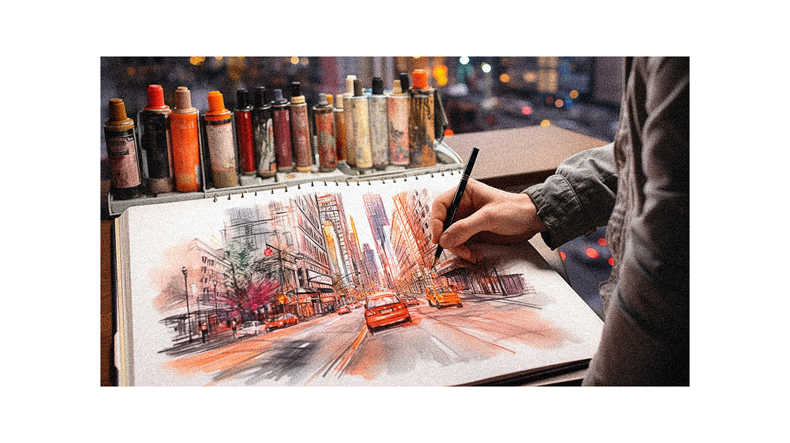Hey there, fellow artists!
I’ve got some awesome quick sketching tips for urban landscapes that will blow your mind.
Get ready to capture the vibrant energy of city life like never before.
From bustling streets to architectural marvels, we’ll explore the techniques and tools you need to create captivating sketches that tell stories of the cities we love.
So grab your pencil, sketchbook, and watercolors, and let’s dive into the world of urban sketching together!
Urban Sketching Basics
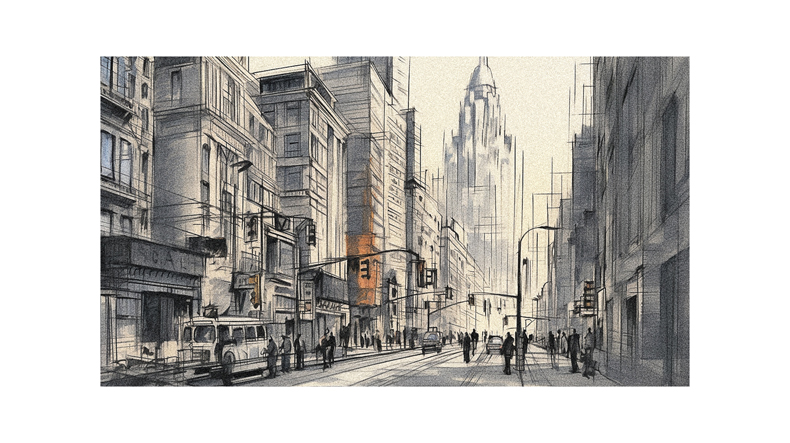
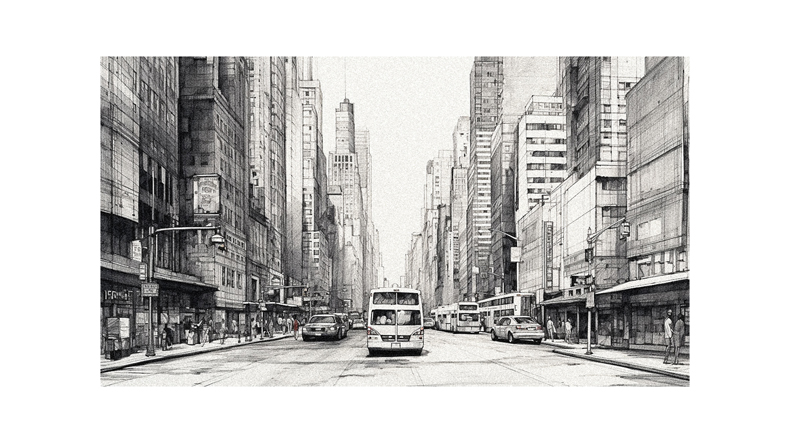
Capturing the vibrancy of life through urban sketching is an exciting and fulfilling artistic pursuit. As an urban sketcher, I’m constantly inspired by the hustle and bustle of city life. Whether it’s the historical buildings, the modern architecture, or the lively street scenes, urban sketching allows me to document the essence of urban areas.
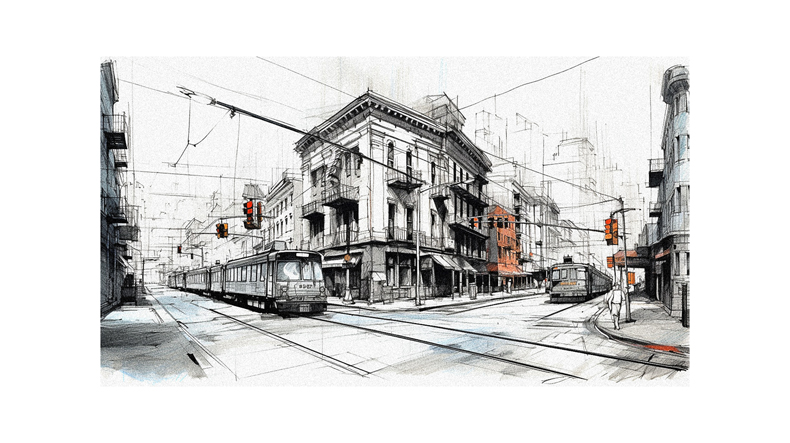
With my pencil or pen in hand, I can capture the energy of teeming markets, the charm of cafes, and the creativity of street performers. Urban sketching isn’t limited to major metropolises; it can be done in small towns and ancient places as well.
The beauty of urban sketching lies in its ability to tell stories and preserve moments in time.
Essential Tools and Techniques
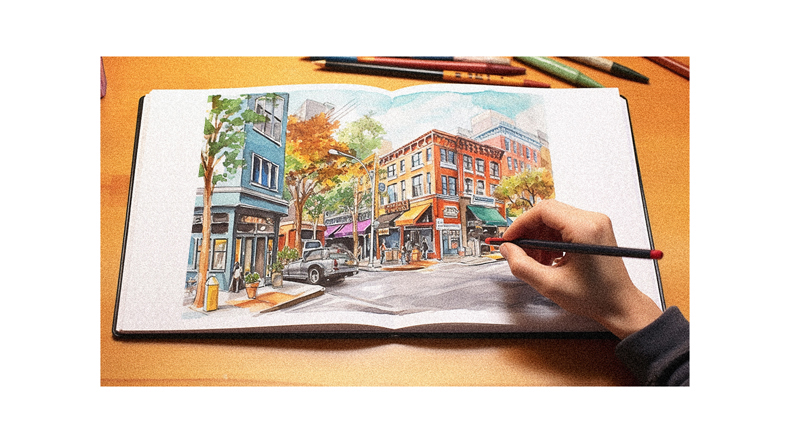
I rely on a combination of essential tools and techniques to create vibrant and expressive urban sketches. Here are four items that play a crucial role in my sketching process:
- Sketchbook: A reliable sketchbook is a must-have for capturing urban landscapes on the go. I prefer one with thick, durable pages that can handle different media.
- Pens/Pencils: I use a variety of pens and pencils to add depth and detail to my sketches. A waterproof pen is essential for outlining and adding fine lines, while a pencil allows for shading and creating textures.
- Watercolors: Adding a touch of color brings life to my urban sketches. I carry a compact set of watercolors and a water brush for easy application and minimal mess.
- Observation and Practice: The most essential tool in my arsenal is keen observation and practice. Taking the time to study the scene and honing my sketching skills allows me to capture the essence of the urban landscape.
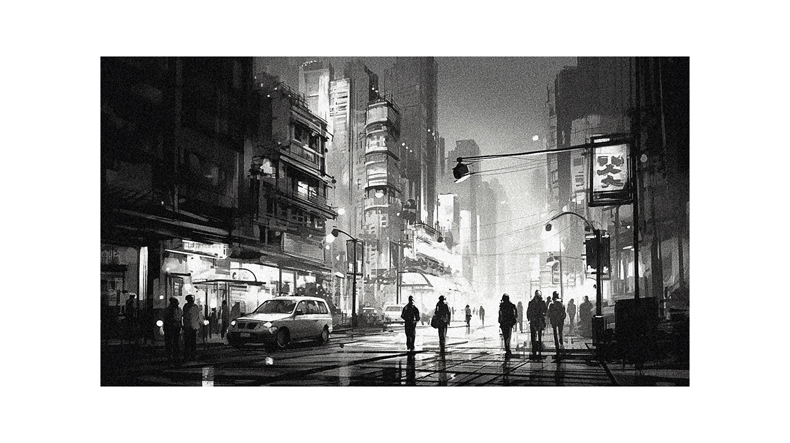
With these essential tools and techniques, I can create dynamic and captivating urban sketches that truly reflect the energy of the city.
Connecting With the Art Community
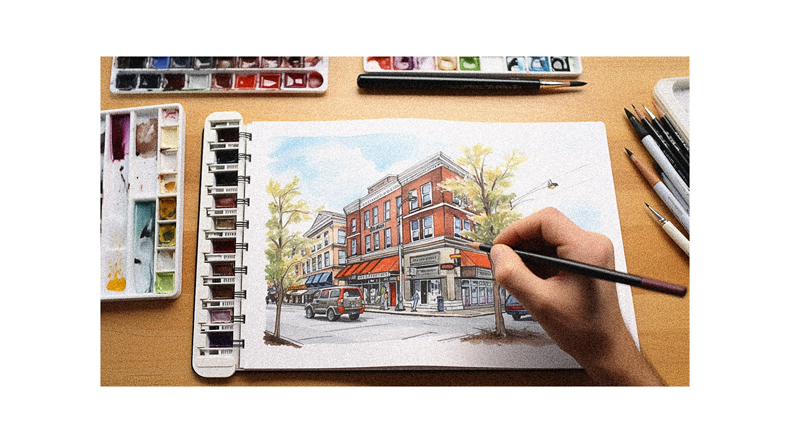
Connecting with the art community can be a rewarding and inspiring experience. As an artist, I’ve found that connecting with other artists and sharing my work has enriched my creative journey in numerous ways. Here are four reasons why connecting with the art community is so valuable:
- Support and Encouragement: The art community provides a supportive environment where you can receive constructive feedback, encouragement, and motivation to keep pursuing your artistic goals.
- Inspiration and Learning: Interacting with fellow artists exposes you to different styles, techniques, and perspectives. It’s a great opportunity to learn from each other, exchange ideas, and gain inspiration for your own artwork.
- Collaboration and Networking: Engaging with the art community opens doors to exciting collaboration opportunities. Collaborative projects expand your artistic skills and allow you to build connections and expand your network within the art world.
- Sense of Belonging: Being part of a community of like-minded individuals who share the same passion for art creates a sense of belonging and camaraderie. It helps you feel connected and supported, especially during challenging times.
Watercolor Exercises
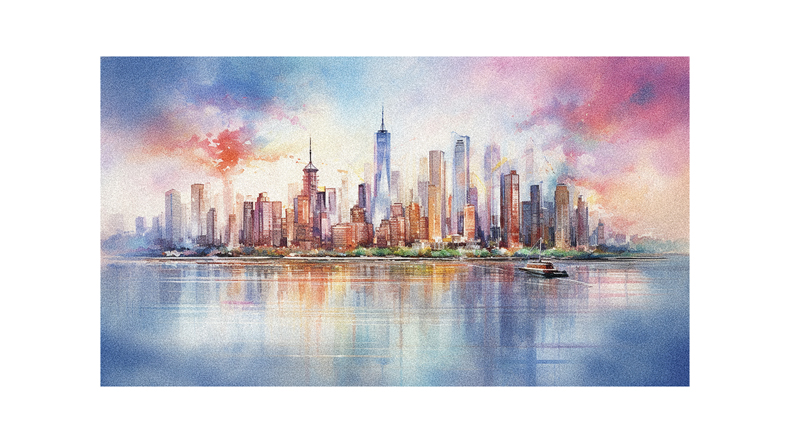
But, I can’t deny that watercolor exercises have greatly improved my skills in urban sketching. The fluidity and transparency of watercolors allow me to capture the vibrant and dynamic nature of urban landscapes.
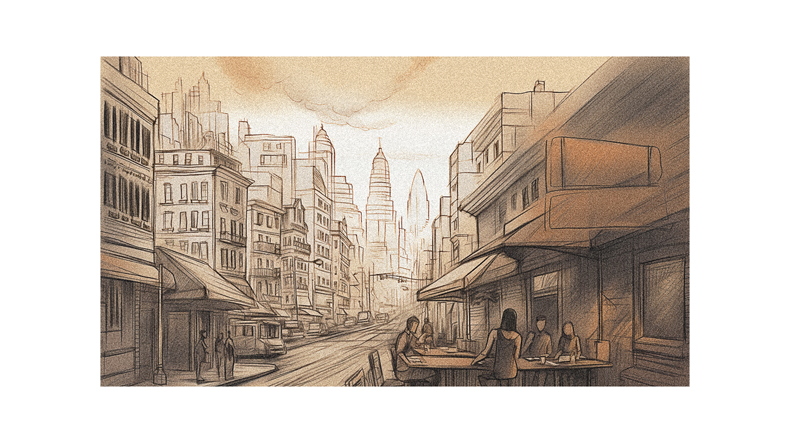
One of my favorite exercises is practicing wash techniques to create different values and textures. By experimenting with the amount of water and pigment on my brush, I can achieve subtle gradations and bold contrasts in my sketches.
Another exercise I enjoy is exploring the interaction of watercolors with pen and ink. Adding ink details on top of a watercolor base adds depth and definition to my urban sketches.
Creating Dramatic Effects
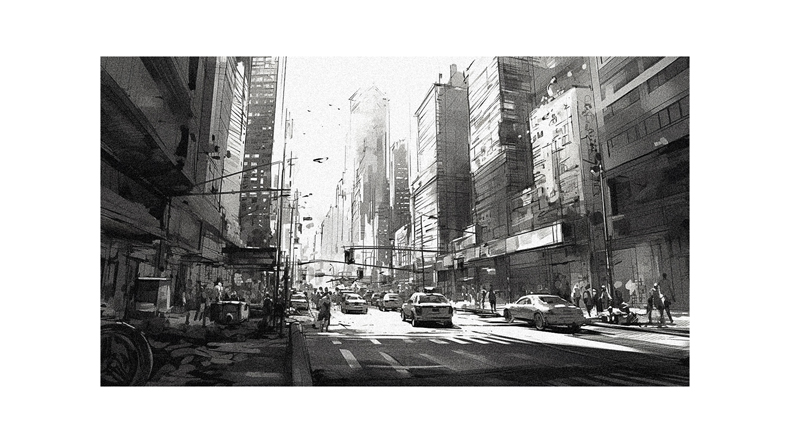
To achieve dramatic effects in my urban sketches, I experiment with bold horizons and unique perspectives. Here are four techniques I use to create impactful and dynamic sketches:
- Play with Strong Lines: I use bold and confident lines to define shapes and structures in my urban scenes. This adds a sense of strength and boldness to the composition.
- Contrast Colors: By juxtaposing vibrant and contrasting colors, I can create a visual impact and add depth to my sketches. I experiment with complementary colors or use a limited color palette to create a dramatic atmosphere.
- Add Dynamic Shadows: I incorporate strong and dynamic shadows to enhance the drama in my sketches. Shadows can create a sense of depth, volume, and mood.
- Experiment with Unique Perspectives: I challenge myself to find interesting and unexpected viewpoints. I can add a sense of drama and intrigue to my urban sketches by exploring different angles and perspectives.
Organizing Your Watercolor Palette
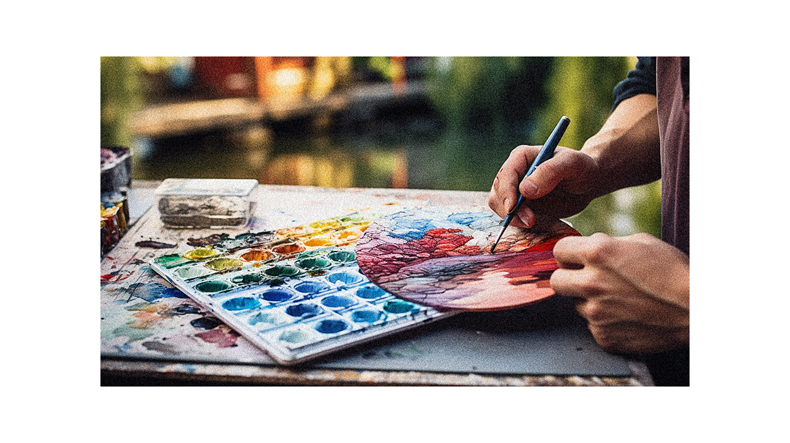
I organize my watercolor palette by arranging the colors to suit my workflow and make them easily accessible.
I like to group similar colors, such as blues and greens, reds and oranges, and yellows and browns. This helps me quickly find the color I need when I’m sketching on location.
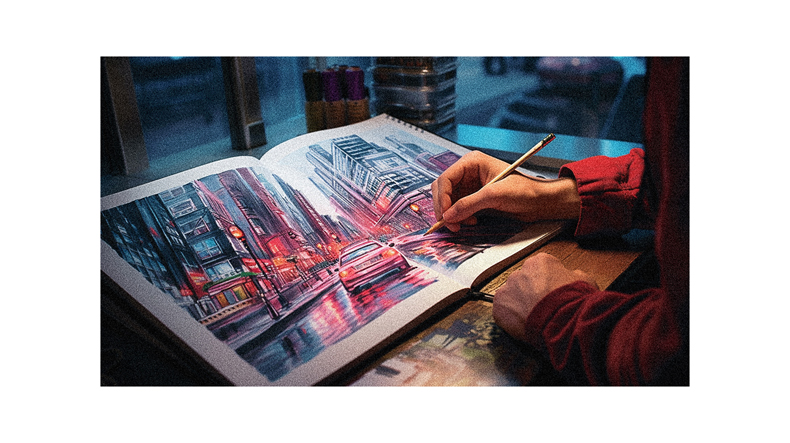
I also like to have a few neutral colors, like grays and blacks, readily available for adding depth and shading to my sketches.
To keep my palette organized, I use a small piece of masking tape to label each color. This way, I can easily see which color is which without having to guess or waste time.
Gouache Painting
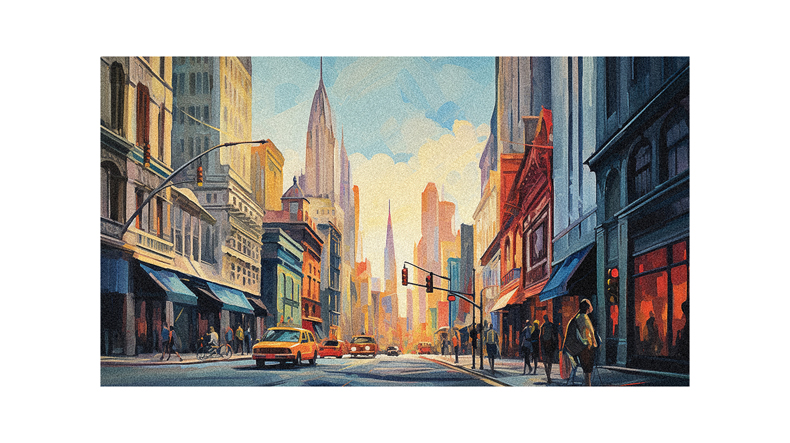
I love experimenting with gouache painting because it allows me to create vibrant and expressive urban sketches. Gouache paint has become one of my favorite mediums to work with because of its unique qualities. Here are four reasons why gouache painting is perfect for urban sketches:
- Vibrant Colors: Gouache paint is known for its intense pigmentation, allowing me to create bold and vibrant colors in my urban sketches.
- Opacity and Layering: Gouache paint can be applied in thin layers or built up for more opaque coverage. This flexibility allows me to add depth and dimension to my artwork.
- Quick Drying: Gouache paint dries quickly, making it ideal for capturing the fast-paced energy of urban scenes. I can work quickly and confidently without worrying about smudging or blending colors.
- Easy to Control: Gouache paint is versatile and easily controlled, allowing me to achieve fine details and precise lines in my urban sketches.
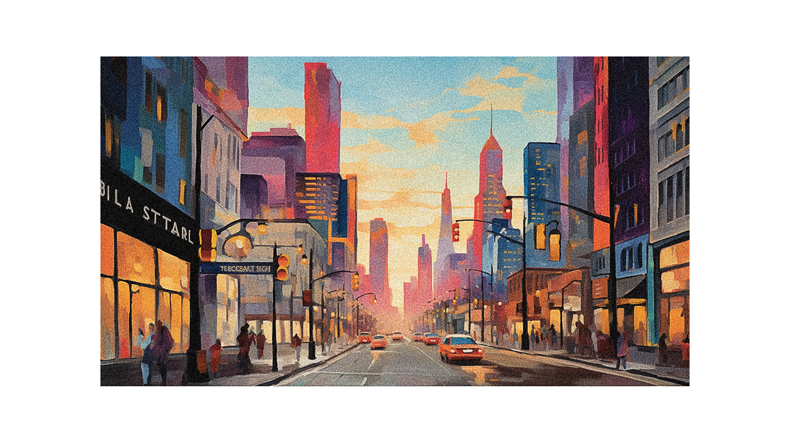
With gouache painting, I can bring my urban sketches to life with vibrant colors and expressive brushstrokes.
Mastering Values in Watercolor
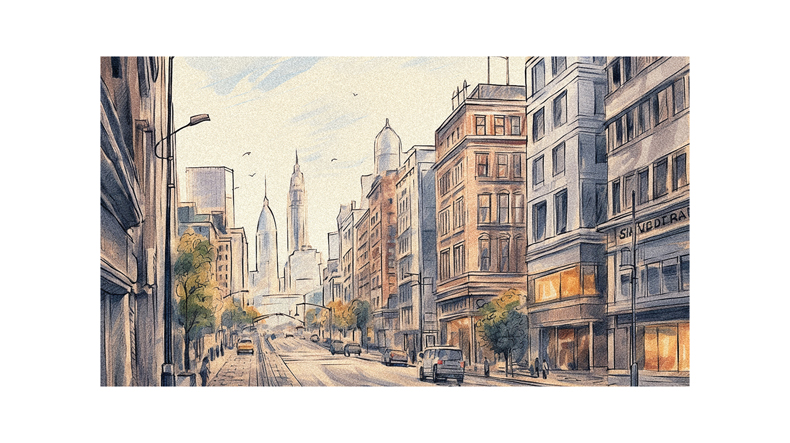
As I continue to explore watercolor techniques, I’ve found that mastering values is crucial for creating depth and realism in my urban sketches. Understanding the importance of values in watercolor painting has allowed me to enhance the overall impact of my artwork.
By creating a value scale and practicing the creation of light and shadow, I’m able to achieve a wide range of values in my sketches. This not only adds depth to the composition but also brings a sense of realism to the urban scenes I capture.
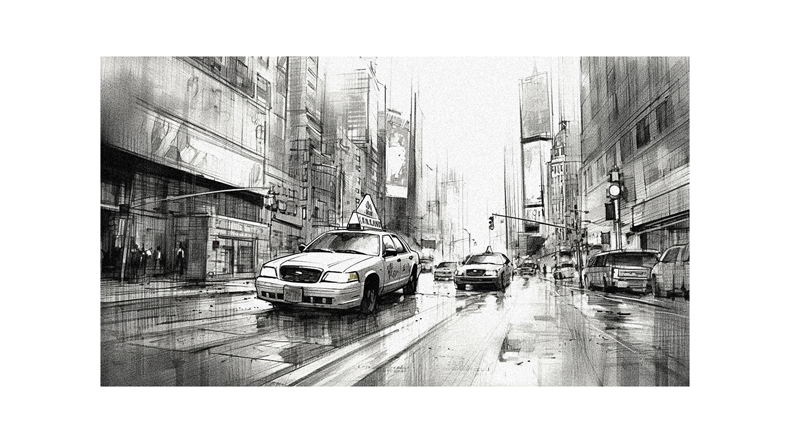
Experimenting with different techniques for achieving values has been an exciting journey, and I’m constantly learning new ways to enhance the depth and realism of my urban sketches through the mastery of values in watercolor.
Engaging in Discussions
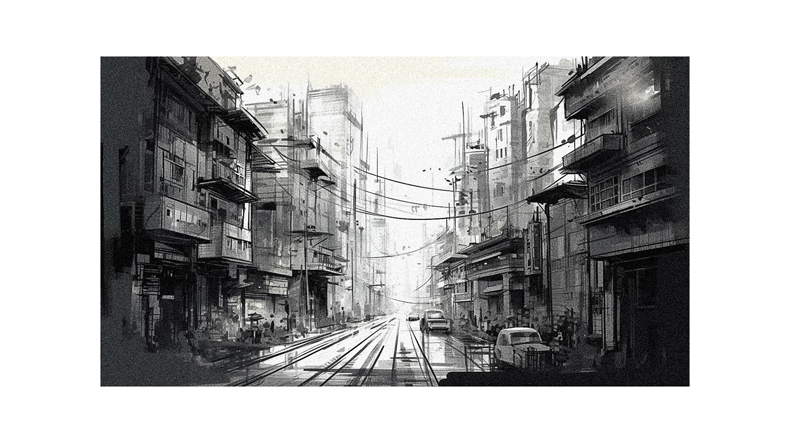
Engaging in discussions is a great way to connect with like-minded individuals and foster a sense of community and collaboration.
Whether you want to talk about your latest creation, ask for feedback, or simply share your passion for art, joining the conversation allows you to connect with other artists worldwide.
It’s an opportunity to learn from one another, gain inspiration, and expand your artistic horizons.
Art Supplies
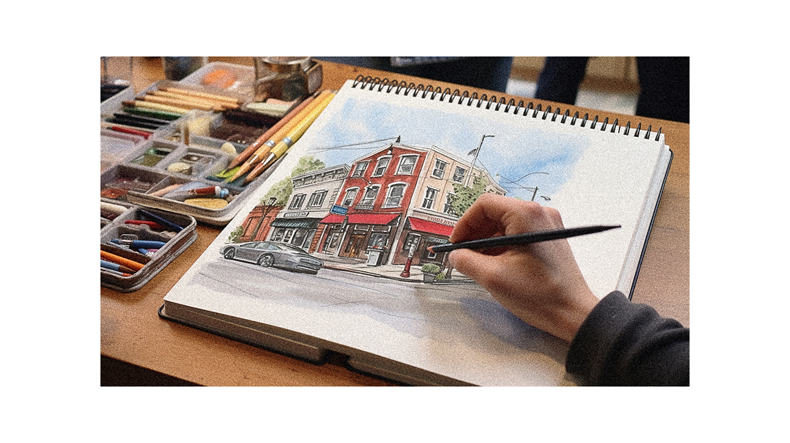
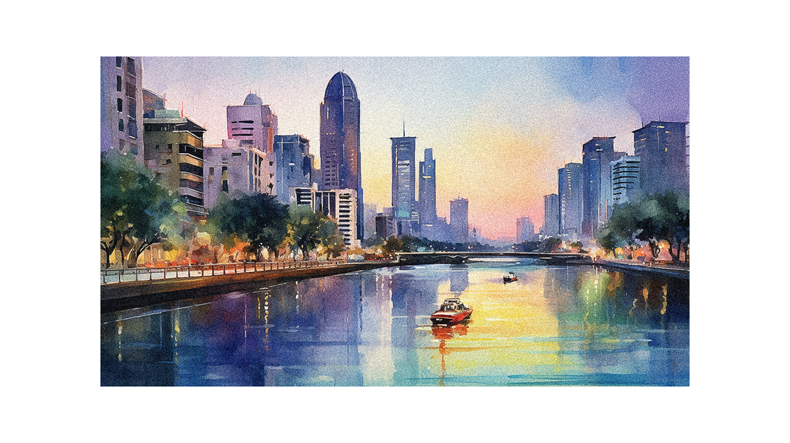
What art supplies do I need for urban sketching?
When capturing the essence of urban landscapes, having the right art supplies is essential. Here are four items that I find crucial for urban sketching:
- Sketchbook: A portable sketchbook is a must-have for urban sketching. It lets you quickly capture scenes and jot down notes on the go.
- Pen or pencil: A reliable pen or pencil is essential for outlining and adding details to your sketches. Choose one that suits your style and preference.
- Watercolors: Adding a touch of color to your urban sketches can bring them to life. Carry a small set of watercolors and a water brush for easy application.
- Brush pen: A brush pen is a versatile tool for creating bold lines and adding depth to your sketches. It allows for quick and expressive mark-making.
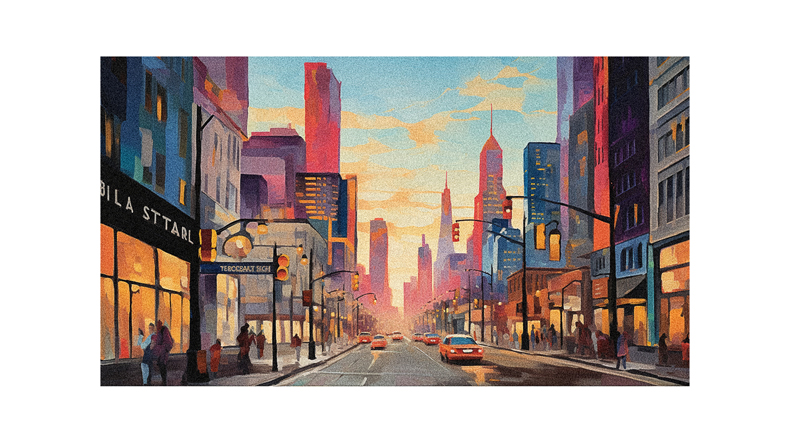
With these art supplies in hand, you’ll be ready to explore and capture the vibrant urban landscapes around you.
Composition Techniques
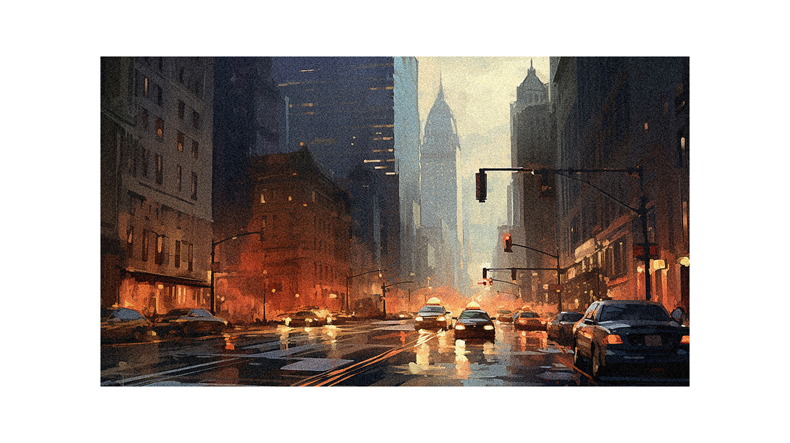
To create visually appealing urban sketches, it’s important to master composition techniques. These techniques help to organize the elements within your sketch and create a sense of balance and harmony.
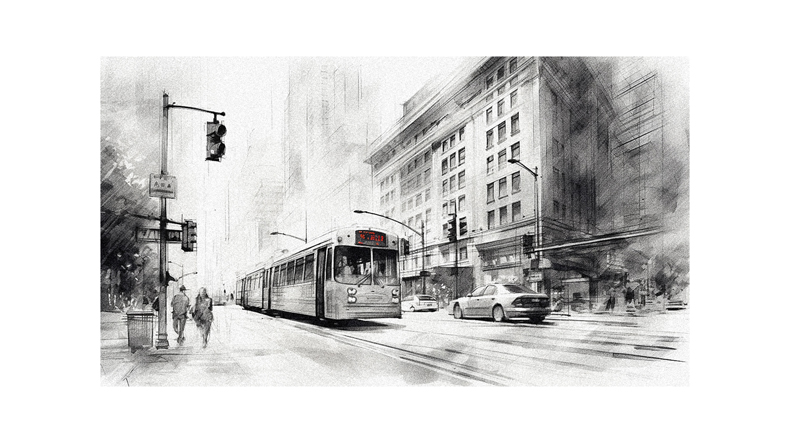
Here are four fundamental composition techniques to consider:
- Establish composition by making quick sketches of big shapes: Start by sketching the basic shapes and structures of the urban landscape. This will help you establish the overall composition and ensure your sketch is well-balanced.
- Identify a focal point: Choose a focal point within your sketch as the main point of interest. This could be a building, a person, or a significant architectural feature. By highlighting this focal point, you can draw the viewer’s attention and create a sense of depth and perspective.
- Break the frame into thirds for better placement: Divide your sketching area into thirds horizontally and vertically. This will help you to place your main elements and focal points in visually appealing positions. The rule of thirds is a widely used composition technique in photography and can also be applied to urban sketching.
- Experiment with different compositions: Don’t be afraid to try different composition techniques and experiment with different angles and perspectives. This will help you to find unique and exciting ways to capture the urban landscape. Remember, composition is a personal choice, and there’s no right or wrong way to do it. Trust your instincts and have fun with it!
Proportional Accuracy
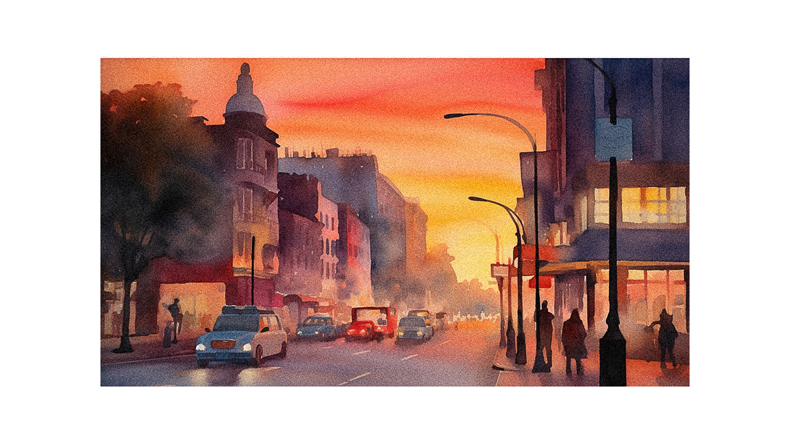
When sketching urban landscapes, thinking like an architect and ensuring proportional accuracy is important. Proportions are essential for creating a realistic sketch that accurately represents the scene in front of you.
One clever trick I use is to hold my pen at arm’s length and compare its size to the different elements in the scene. This helps me gauge the proportions and make adjustments as needed.
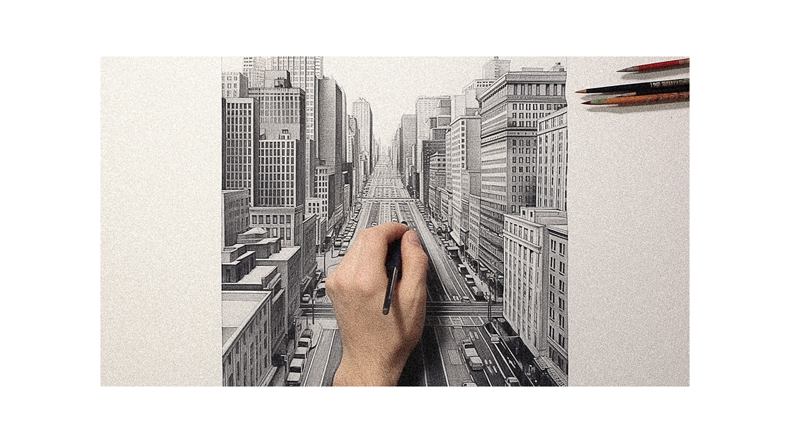
Practice measuring proportions in different scenes to improve your accuracy over time. Remember, sketching urban landscapes isn’t just about capturing the overall scene, but also the details and proportions that make it unique.
Follow us on Pinterest for more tips, tutorials, and artist reviews!

